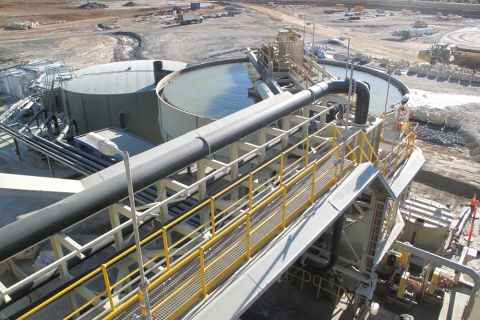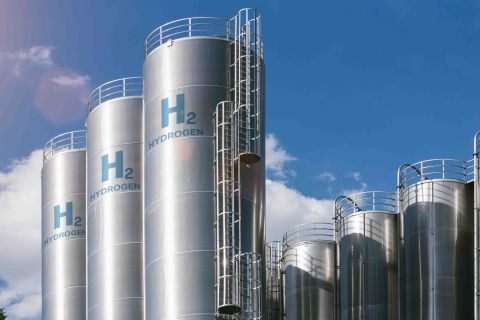In the much-buzzed-about Midcontinent, there’s no single shining star—there’s a whole galaxy’s worth.
Though the Mississippi Lime may have once starred in the regional show, some other local plays are emerging as stage-stealers as activity heats up. As production intensifies throughout the Midcontinent on the upstream side, midstream companies are strategizing the best ways to serve producers.
And in 2014, midstreamers will continue to make large strides in building out the region’s necessary infrastructure. Increasingly, companies are viewing plays within the Midcontinent as places to make long-term investment opportunities, says Preston Soell, president of the Midcontinent Gas Processors Association. However, he adds, building out the Midcon won’t be easy.
“There is a significant amount of work to do, as a result of [labor, regulatory and other] challenges,” Soell tells Midstream Business. “Naturally, I don’t have insight to the plans of all the midstream providers in the Midcontinent, but I would not be shocked if we were to look back five years from now to see that we have collectively as a midstream industry spent $4 to $5 billion in new infrastructure and improvements.”
Easing constraints
For years, the Midcontinent has struggled with addressing its natural gas liquid (NGL) and residue gas-takeaway issues. However, the troubles that long dogged the region saw some relief when DCP’s Southern Hills Pipeline came online in mid-2013.
Southern Hills, which provides NGL transportation from the Midcontinent to Gulf Coast markets, is a 900-mile common carrier pipeline with an NGL capacity of 175,000 barrels per day. This means that as production in the Mississippi Lime increases, DCP will have an outlet to meet producer needs.
Though the pipeline is operational, more plants will be tied to it in early 2014, meaning the amount of barrels that it moves will significantly increase during the first quarter.
“To date, Southern Hills has helped alleviate localized constraints,” Richard Bradsby, Midcontinent business unit vice president for DCP Midstream LLC, tells Midstream Business. “Broader relief will be accomplished once the pipeline is pushing quite a bit more product to [Mont] Belvieu at the beginning of this year.”
Valuations for NGLs at the Conway, Kansas, hub have been a huge problem in the Midcontinent, making pipelines such as Southern Hills crucial. It helps provide value to producers from a Mont Belvieu, Texas, hub basis, where prices are stronger, as opposed to Conway.
Long-haul pipelines bringing NGLs to Mont Belvieu are sorely needed in the Midcontinent, says Mark Casaday, executive vice president and chief operating officer of midstream at PVR Partners LP.
“I think that the [Oklahoma] Panhandle is still captive to Conway pricing and Conway pricing is below Belvieu based on transportation differentials,” he tells Midstream Business. “The market is Mont Belvieu and the market is the Gulf coast. Anytime you can provide direct access and cut out any intermediate step to get your product to market, the better off you’re going to be.”
As well, DCP is building out its assets on the western side of the Mississippi Lime, where it will ultimately be able to gather and process as much as 75 million cubic feet (MMcf) of natural gas per day. The company has converted a liquids pipeline to gas in order to serve Oklahoma producers on the eastern side of the Mississippi Lime. Together, these projects are likely to ease the strain of increasing Mississippi Lime volumes.
“We’ve continued to develop additional gathering capacity on the western edge of the Mississippi Lime,” says Bradsby. “We continue to see growth, I wouldn’t characterize it as heavy growth, but we have continued to add facilities and pipelines to assist west Mississippi Lime producers.”
To ensure all of its Midcontinent assets are connected, DCP is undergoing a major push to construct trunklines that will connect a group of 12 plants together as an interconnected system. Interconnecting assets give the company a multitude of advantages, says Brian Frederick, president of DCP’s South and Midcontinent business unit.
“One is flexibility: We can get gas to multiple plants and multiple downstream markets. It also creates a level of reliability. If one plant has some down time for maintenance, we can ship volumes to another facility. The other advantage to having all these interconnected assets is if there is an area of growth, we don’t have to build a new plant in that area. We can actually pipe that gas somewhere else and allow the drilling development to happen a lot faster. We believe the interconnectivity of all these 12 plants is a significant benefit to the producing community.”
Hot spots
Though a great deal of activity is happening in the Mississippi Lime, Casaday is seeing significant activity in other areas as well. There’s sizable activity in PVR’s Panhandle system serving Cleveland, Tonkawa and Granite Wash producers.
“We’ve seen consistent activity in the Mississippi Lime, but the results we have heard back from the producing community are that they are more spotty than the Panhandle formations,” he said.
Also drawing a lot of attention is the South Central Oklahoma Oil Province (SCOOP) area, particularly the Cana- Woodford, which has caught the attention of industry big players, such as Newfield, Continental and Marathon. To date, oil results in the region have been promising, which has attracted new producers to the region.
“That area has a high level of activity,” says Bradsby. “We’re excited there. It’s facilitating some nice growth for us.”
However, significant rapid production growth also has the potential to overwhelm existing midstream infrastructure. Managing pockets of growth has been a big challenge. However, Frederick says DCP’s plan to interconnect assets will help.
“If you have a SCOOP play that really ramps up and grows, how do you manage that quickly?” he says. “We believe managing pockets of growth is easier with a big system than with individual assets.”
Pricing
Overall, some of the Midcontinent plays—including the SCOOP plays, Granite Wash and Mississippi Lime—compare favorably to other plays throughout the country. Their strong economics are likely to drive activity in the Midcontinent for years to come, says Frederick.
“If you have one of the top-ranked plays, that’s where the capital is going to go,” he says. “You’re going to take capital from a Fayetteville-type play and bring it to this region if the economics of the play are better.”
Of course, pricing has been a driving factor in the Midcontinent. As such, challenges to operating in the area are directly related to the NGL pricing environment. PVR, for example, takes commodity risks since some of its Mississippi Lime contracts are structured as percent-of-proceeds contracts. Unfortunately, that puts the company at the mercy of the markets.
“The lower the NGL values, the less money we make, and inversely the higher the NGL values, the more money we make,” Casaday says. “And, so, NGL pricing is the one factor out of our control to the most extent, which drives our business and capital decisions in the Midcontinent.”
PVR’s business model is driven by drilling activity, while drilling activity is driven by gas, oil and NGL prices.
“In the marketplace we live in today, it’s a global marketplace,” he adds. “You know, other than our use of hedging programs to minimize our volatility, unfortunately in the midstream business, under the contract mix we have where we have percent-of-proceed contracts, we’re at the mercy of the markets. We have made incremental steps to improve our plant recoveries so that we get every last drop out of a cubic foot of gas, and we have made significant strides to try to improve our netbacks and our markets for condensate, but our netbacks and pricing for ethane, propane and isotope normal butanes are set by the macro commodity price markets.”
During the next five to 10 years, he expects activity in the Midcontinent to remain flat.
“It’s still economical but it’s by no means gangbusters,” he says. “Remember, if it were not economical, there would be no wells being drilled.”
Standing out
PVR’s Midcontinent midstream business operations provide gathering, compression, transportation, processing and related services to gas producers in Texas and Oklahoma. Its area assets include more than 4,500 miles of pipelines and six processing plants with about 460 MMcf per day of combined capacity. The bulk of its assets are broken down into a handful of systems.
Its Panhandle natural gas gathering system stretches across more than 11 counties in the Anadarko basin and includes more than 2,100 miles of gas gathering pipelines, 43 field compressor stations and four gas processing plants.
Its Crescent gas gathering system north of Oklahoma City runs through seven counties in Oklahoma’s Sooner trend and includes 1,725 miles of gas gathering pipelines and a gas processing plant with 40 MMcf per day capacity. Fourteen compressor stations are operating throughout the system. PVR also owns several smaller gathering systems in the Midcontinent.
PVR says grows its presence to match the demands of upstream producers. It expands it systems, connects various wells and improves or builds new process plants as the need for such infrastructure increases.
“Our growth and expansion is predicated upon drilling activity in each region,” Casaday adds. “We like all of the regions, we like the reserves and the plays in every region we have systems in. It’s just our expansions are predicated on drilling activity.”
In an environment as competitive as the Midcontinent, companies such as PVR strive to find ways to stand out above the crowd. For PVR, says Casaday, this involves providing the best possible service to producers.
“You have to have some niche or some characteristics that distinguish you from your competition. And we feel strongly that our customer service model, where we go above and beyond to satisfy our producers economically has distinguished us from our competition,” he says. “It’s the most important factor. Because of it being so competitive, one disgruntled customer is one lost well. We’re not perfect, we do occasionally make slipups, but on average we pride ourselves on our customer service model.”
Recommended Reading
CEO: Linde Not Affected by Latest US Green Subsidies Package Updates
2024-02-07 - Linde CEO Sanjiv Lamba on Feb. 6 said recent updates to U.S. Inflation Reduction Act subsidies for clean energy projects will not affect the company's current projects in the United States.
NAPE: In Basins Familiar to E&Ps, Lithium Rush Offers Little Gold
2024-02-07 - A quest for sources of lithium comes as the lucrative element is expected to play a part in global efforts to lower emissions, but in many areas the economics are challenging.
The Risks and Benefits of the IRA’s 45Q, 45Z
2024-01-29 - The Inflation Reduction Act sections 45Q and 45Z are incentives to invest in energy transition and renewable energy projects, but they involve legal considerations to account for.
Tax Credit’s Silence on Blue Hydrogen Adds Uncertainty
2024-01-31 - Proposed rules for the 45V hydrogen production tax credit leave blue hydrogen up in the air, but producers planning to use natural gas with carbon capture and storage have options.
US EPA Removes Existing Gas Plants From Proposed Carbon Rule
2024-02-29 - The U.S. Environmental Protection Agency will exclude existing natural gas power plants from its proposed carbon regulations that it plans to finalize in April.



